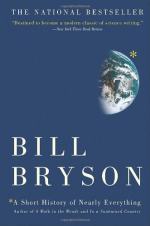|
This section contains 222 words (approx. 1 page at 400 words per page) |

|
Part 2, Chapter 7 Summary and Analysis
In 1896, Henri Becquerel of Paris accidentally left a packet of uranium salts on a wrapped photographic plate in a drawer. Mysteriously, the plate was ruined by an emission from the salts. Becquerel turned the matter over to a graduate student, Marie Curie, to investigate along with her husband Pierre. In 1903, the Curies and Becquerel were awarded the Nobel Prize in physics for the discovery of radioactivity.
Radiation was believed to be so energetic that it must have healthful properties. It was routinely included in some toothpastes and laxatives. Into the 1920s, some hotels advertised the therapeutic effects of their radioactive mineral springs. Scientists now know, of course, that radiation in high doses is toxic. Even low doses can induce cancer, such as the leukemia that killed Marie Curie in 1934.
At McGill University in Montreal, a New Zealand-born farm boy...
(read more from the Part 2, Chapter 7 Summary)
|
This section contains 222 words (approx. 1 page at 400 words per page) |

|




